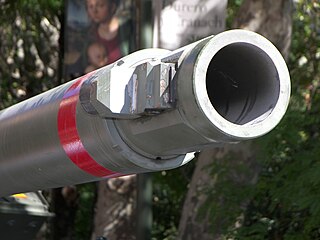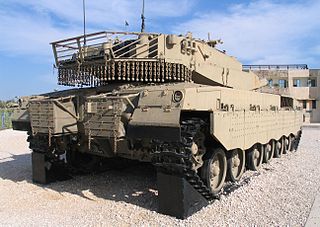Mechanics
If an anti-tank projectile or shaped-charge blast manages to penetrate a turreted armored vehicle's hull and subsequently its ammunition storage area, the shock wave or heat and pressure can be sufficient to cause cooking off or sympathetic detonation of the tank's unfired explosive shells and propellant. This causes a massive and instantaneous overpressure in the sealed internal compartment of the tank, which is released by exploding outwards through the weakest point in the otherwise homogeneous compartment, namely, the turret ring. This blows the turret completely off the chassis and into the air in a gush of flame. The same effect often took place in naval warfare (see loss of Roma battleship)

The jack-in-the-box effect is known to occur in tanks which are "buttoned up" (i.e. with all hatches closed and locked), and which have internally stored ammunition and no blowout panels on the ammunition storage area. Tanks of the World War II era were frequently seen to have lost their turrets in this manner, largely owing to the design of that era, as at the time the need for special shielding of the tank's ammunition storage compartments was not recognized. Some modern tanks, such as the Russian designed T-72 family of tanks use a carousel autoloader, which stores ammunition in a ring around the inside of turret next to the crew. This reduces the size and weight of the autoloader and allows for more loaded ammunition. However, any hits that penetrate and hit this ring of ammo will likely cause an explosion and total loss of the crew and vehicle. Newer Russian tanks such as the T-90 are still susceptible to this effect. [2] [3] [4] [5] [6] However, contrary to popular belief, the flaw is mostly related to the spare ammunition in the turret, outside of the autoloader. The autoloaders have some ballistic protection, but only hold roughly half of a T-72/80’s ammunition. During the Chechnya war, the Russians were able to reduce their losses by having their tanks carry fewer rounds so that all the ammunition and propellant was stored in the autoloaders [7] The latest variant of the T-90M has been designed with some of the spare ammo in an external storage, which reduces the likelihood, but does not completely eliminate the risk of a 'turret toss'. [8]

Many modern Western tanks (for instance, the M1 Abrams, Leopard 2, and Leclerc) feature ammunition compartments designed to fail safely under fire, reducing damage to the level of a firepower kill. In such designs, when the tank is damaged, blowout panels open to channel ignited propellants and explosives away from the crew cabin. While the M1 Abrams and Leopard 2 tanks accomplish this through the use of a human loader, the Leclerc uses a more sophisticated autoloading system that allows storing of ammunition outside of the main turret compartment, coming at the cost of greater weight and lower ammunition capacity. Training doctrine mandates that the ammunition compartment door must be closed before loading the main gun, exposing the crew to only one shell at a time. Whether an enemy hit ruptures the ammunition compartment or penetrates the tank's interior, the crew has a higher chance of survival, so they are more likely to return the tank to a maintenance center or at least escape their disabled vehicle. [2] [6]
Western tanks, however are not totally invulnerable from these sorts of catastrophic hazards. In the Turkish intervention in Syria, images and videos depicting several completely destroyed Leopard 2A4's, some with their turrets blown off, were published in January 2017. The 'turret tossing' effect was potentially caused by a quirk of the Leopard's design, with not all of the ammo being stored in blow-out panel compartments. [9] [10] On 4 September 2023, a UK-made Challenger 2 tank was destroyed in Ukraine, as it was hit by a 9M133 Kornet anti tank missile; after being hit, its turret was separated from the vehicle and the commander's cupola was blown off. [11]














